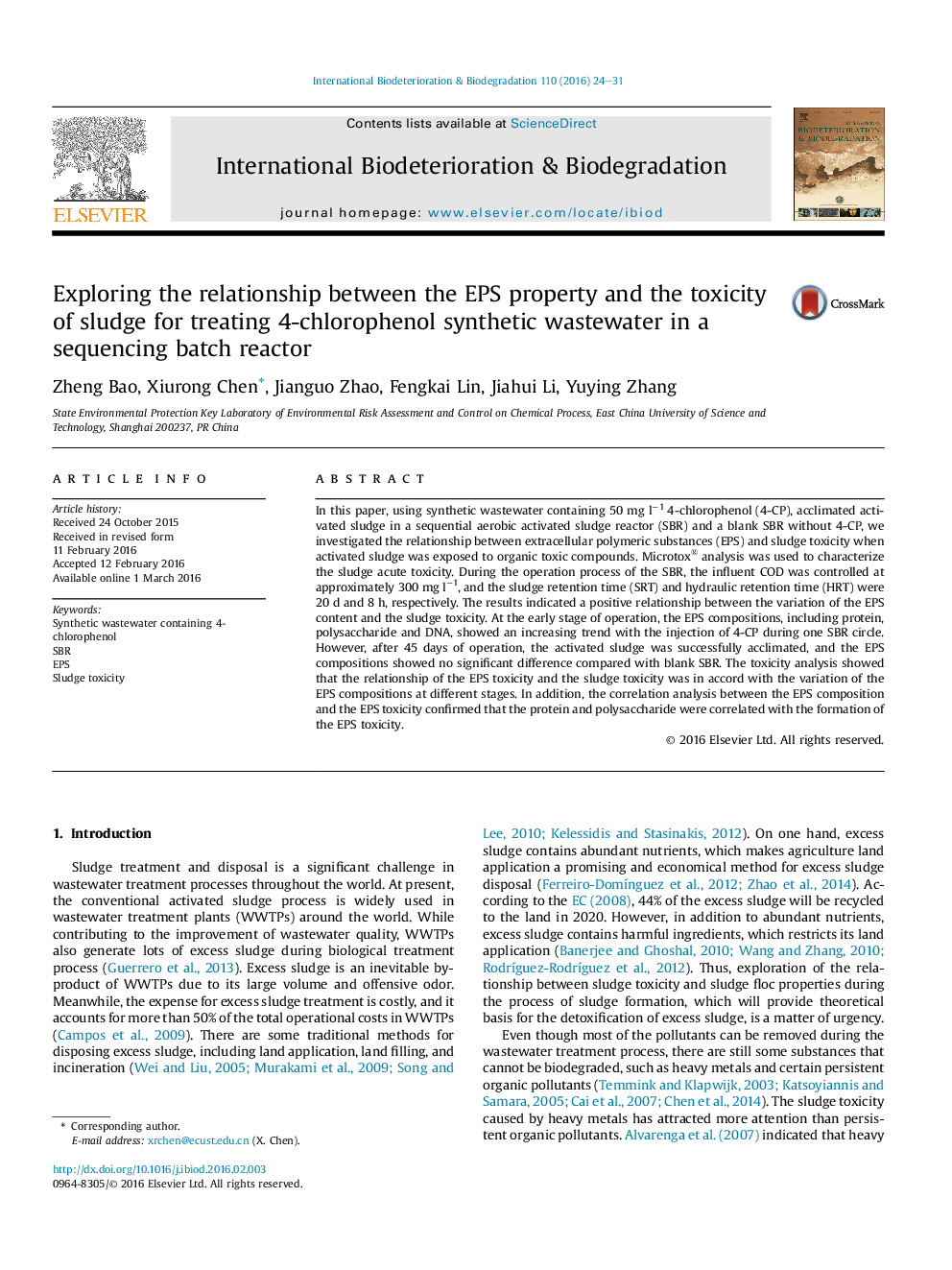| Article ID | Journal | Published Year | Pages | File Type |
|---|---|---|---|---|
| 4364194 | International Biodeterioration & Biodegradation | 2016 | 8 Pages |
•There was a positive relationship between the variation of the EPS content and the sludge toxicity.•The EPS had a certain contribution to the total sludge toxicity.•Protein and polysaccharide of EPS were correlated with the formation of the EPS toxicity.
In this paper, using synthetic wastewater containing 50 mg l−1 4-chlorophenol (4-CP), acclimated activated sludge in a sequential aerobic activated sludge reactor (SBR) and a blank SBR without 4-CP, we investigated the relationship between extracellular polymeric substances (EPS) and sludge toxicity when activated sludge was exposed to organic toxic compounds. Microtox® analysis was used to characterize the sludge acute toxicity. During the operation process of the SBR, the influent COD was controlled at approximately 300 mg l−1, and the sludge retention time (SRT) and hydraulic retention time (HRT) were 20 d and 8 h, respectively. The results indicated a positive relationship between the variation of the EPS content and the sludge toxicity. At the early stage of operation, the EPS compositions, including protein, polysaccharide and DNA, showed an increasing trend with the injection of 4-CP during one SBR circle. However, after 45 days of operation, the activated sludge was successfully acclimated, and the EPS compositions showed no significant difference compared with blank SBR. The toxicity analysis showed that the relationship of the EPS toxicity and the sludge toxicity was in accord with the variation of the EPS compositions at different stages. In addition, the correlation analysis between the EPS composition and the EPS toxicity confirmed that the protein and polysaccharide were correlated with the formation of the EPS toxicity.
